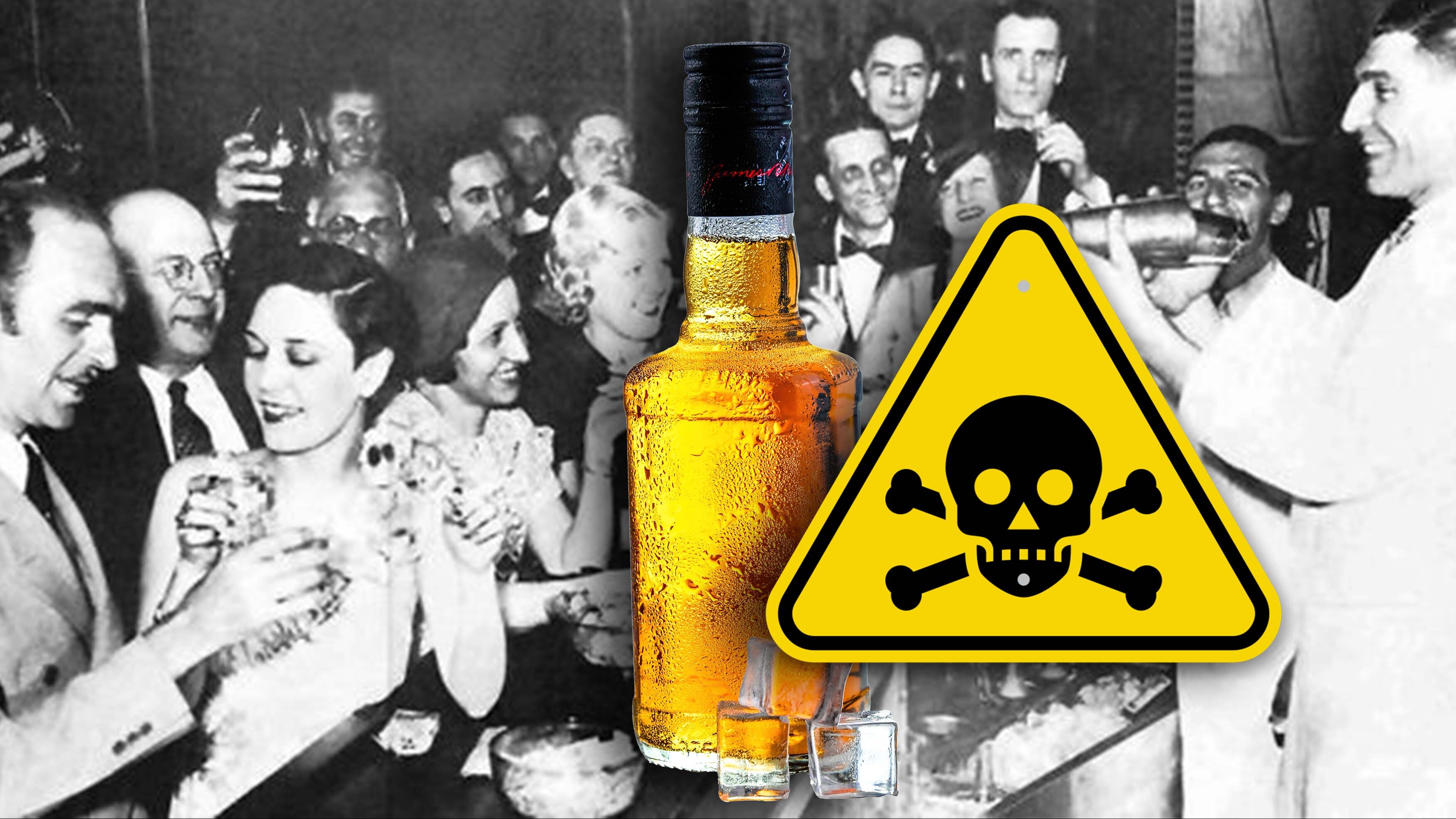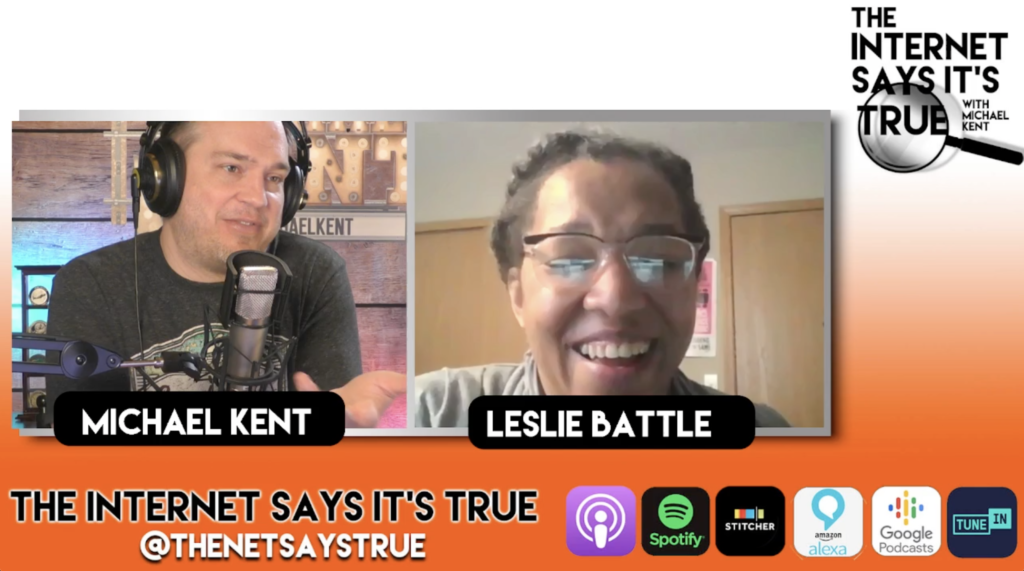The U.S. Government Killed 10K People with Alcohol
Bootlegging was an inevitable result of 1920s Prohibition in the U.S. And when the government tried to solve the problem, they ended up with a solution that killed at least 10,000 Americans through poisoned, denatured industrial ethyl-alcohol. In this episode, we tell the story and then talk with Comedian Leslie Battle!

Prohibition in the United States began because of religion. Pieistic Protestants, which are similar to Lutherans really got the ball rolling on the banning of alcohol in America. They saw all these problems in America – the falling apart of families, violence, and political corruption as all starting with the bottle. So they took their movement to the political parties in America and found support in all of the parties. After a number of states outlawed alcohol, the Volstead Act federalized it and really put prohibition in place.
Basically, the 18th Amendment was ratified in January of 1919 which passed with 68% support in the House and 76% support in the Senate. It outlawed the production, transportation and sale of intoxicating liquors, but it said nothing about consuming them. So the Volstead Act was passed shortly thereafter which had three main parts: 1) prohibiting intoxicating beverages such as liquor, beer and alcohol, 2) regulating the manufacture, production use and sale of alcohol for non-beverage purposes and 3) ensuring that there was enough alcohol available for scientific research, and non-beverage manufacturing uses. So after that – at midnight on January 17 of 1920, Prohibition was officially the new law and would remain that way for 13 years.
There were many side-affects of Prohibition. First of all, it was enforced unevenly. Much like modern day drug laws, it affected poor working class people much more than the wealthy elite. Rich people could have an entire cellar full of booze with little problem, but a working class family would get busted for getting caught with a bottle.
Bootlegging began to spread across the country. Immediately after prohibition went into affect, small portable stills were being sold all over America. There were more than 7,000 violations of the law on the books in the first 6 months. More than 30,000 speakeasies popped up in New York City alone. Some companies got creative to help people get their booze. For instance, the Vine-Glo company made bricks of concentrated grapes for grape juice. Not illegal, but if you let it sit for awhile, it would ferment and you’d get wine. How did people know how to do it? Well Vine-Glo wanted to make sure people knew how to keep their product from becoming illegal, so they printed the instructions right on the label to explain how to make wine out of their product. You know, so people could not do that. For the sake of the law.
If you wanted to drink legally, you get a medical license to drink alcohol. Much like a modern day weed card, it was easy to find a doctor to prescribe you alcohol.
For the rule-breakers, bootlegging continued, along with speakeasies, and all of this required people to transport the illegal booze around the country. Rum-running and bootlegging – here’s something I learned – rum-running refers to smuggling booze by water, bootlegging by land – I hadn’t heard that before. And in the case of bootlegging, rum that was manufactured – mostly in the mountains of Appalachia – needed to be distributed around the country, so people suped-up their cars to be able to evade the police. The guys who suped-up these cars became competitive about it, and this eventually led to what we now call NASCAR.
The government obviously didn’t like the idea that people were still trying to get their hands on alcohol. So they continued taking steps to make it difficult. One of these steps was modifying the alcohol used to make the drinks. A lot of bootleggers were stealing the alcohol that had been produced for industrial use, ethyl alcohol. So the government ordered the denaturation of alcohol products. This way the alcohol could still be used for industrial or non-beverage purposes, but would be undrinkable. Drinking the denatured alcohol would either just taste disgusting or would flat out make the drinker sick. But as people figured out ways to filter out the denaturing agents, the government got tougher. They put more and more deadly chemicals into it. One of these was the combination of methyl alcohol. 4 parts methanol, 2.25 parts pyridine base, and 0.5 parts benzene per 100 parts ethyl alcohol. When word of this got to New York Medical Examiners, they said don’t do it. People will die. But it didn’t stop them. We’re talking about a time when people were ingesting Sterno – the things that you see at buffet tables to keep the food hot – just for its alcohol content. Sure, it might make you a little sick, but if you’re an alcoholic, that’s the chance you take.
Well this particularly dangerous combination of ingredients in denatured alcohol ended up being a horrible idea.
I want to briefly talk about something that happened in the 1970s.
In 1969, the Nixon Administration decided to wage war against the marijuana that was flowing over the border from Mexico. One of the methods that the U.S. government came up with was to help Mexico spray the pot fields with a chemical agent that was intended to make the consumers of the product nauseous. That idea was eventually scrapped, but instead they started sending $15 million a year to Mexico’s drug authority for them to spray herbicides on the crop – namely a chemical called paraquat. The result was that Mexican weed growers just grew plants poisoned with paraquat and sold them anyway. Paraquat was known to cause kidney, liver, lung and heart failure and was later linked to Parkinson’s disease. The program extended well into the Reagan administration, who used the chemical on fields within the United States. It’s unknown how many Americans were disabled or killed from smoking marijuana laced with paraquat, but the chemical still exists today as one of the most common industrial weed killers on the market.
So in the 1920s, we can sort of think of the denaturing of alcohol for the purpose of making it horrible to drink as sort of a test run. On New Year’s Day, 1927, 41 people died in New York’s Bellevue Hospital from drinking industrial alcohol that had been poisoned with denaturing agents. People were getting alcohol anywhere they could and stealing this industrial alcohol was some of the most available, easiest liquor to score. 60 million gallons of the stuff was stolen annually for drinking, leading to deadly results. The New York City medical examiner, Charles Norris condemned the denaturing practice at a press conference. He said: “The government knows it is not stopping drinking by putting poison in alcohol, yet it continues its poisoning processes, heedless of the fact that people determined to drink are daily absorbing that poison. Knowing this to be true, the United States government must be charged with the moral responsibility for the deaths that poisoned liquor causes, although it cannot be held legally responsible.”
The first year, there were thousands of hospitalizations and 400 deaths attributed to drinking the poisoned alcohol. If people didn’t die, they were often facing paralysis or blindness. The second year, there were 700 deaths. And it kept rising.
When prohibition was finally lifted in 1933 through the 21st Amendment, the damage had been done. It’s tough to say how many people died from this, but conservative estimates put the number at around 10,000 over the period of 13 years. On the larger end, some people claim it to be around 30,000 deaths. One of the reasons it’s difficult to say is because some of those deaths could be due to alcohol poisoning by its very nature.
And like a lot of government policies, this affected the poor population in a much larger way than the wealthy. People who could afford it could attain liquor that was made without the industrial ethyl alcohol and would be fine. But the average working class American, if they wanted to drink, the only alcohol available had been poisoned by the government.
So that’s the story of how our government poisoned a bunch of Americans and how prohibition didn’t work.
Review this podcast at https://podcasts.apple.com/us/podcast/the-internet-says-it-s-true/id1530853589
Bonus episodes and content available at http://Patreon.com/MichaelKent
For special discounts and links to our sponsors, visit http://theinternetsaysitstrue.com/deals

Sources for this episode:
https://www.usatoday.com/story/news/factcheck/2020/06/30/fact-check-u-s-government-poisoned-some-alcohol-during-prohibition/3283701001/
https://historycollection.com/the-us-government-poisoned-alcohol-to-enforce-prohibition/
https://en.wikipedia.org/wiki/Prohibition_in_the_United_States#Medical_liquor
https://slate.com/technology/2010/02/the-little-told-story-of-how-the-u-s-government-poisoned-alcohol-during-prohibition.html
http://content.time.com/time/specials/packages/article/0,28804,1864521_1864524_1864626,00.html
https://www.history.com/news/10-things-you-should-know-about-prohibition
https://www.law.cornell.edu/constitution-conan/amendment-18
https://www.loc.gov/classroom-materials/united-states-history-primary-source-timeline/progressive-era-to-new-era-1900-1929/prohibition-case-study-of-progressive-reform/
https://www.youtube.com/watch?v=RNZz4g9GXC0
https://www.youtube.com/watch?v=SoQauFwCB2k
https://www.youtube.com/watch?v=W668NyGcUQ8
https://thoughtcatalog.com/jeremy-london/2018/08/paraquat-pot/

